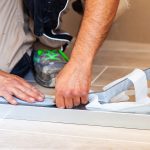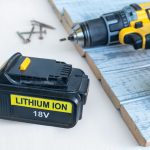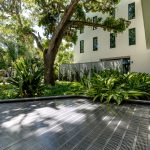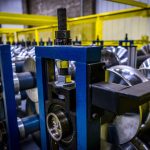2019 Metal Construction Hall of Fame

“Unique” is one way to describe Bill Lowery’s operating style. “All encompassing” might be better. Having gained the experience of having worked in almost every aspect of the insulated metal panel (IMP) business for over 34 years, that experience has resulted in Lowery’s significant industry contributions. He has successfully built and managed two IMP manufacturing companies based on the old Henry J. Kaiser premise: “find a need and fill it.” “[That premise] was on all the old cement trucks and I thought that was a good saying,” Lowery explains. “Instead of inventing something people would never use, find something people really need and come up with a good solution.”
Additionally, Lowery built company infrastructure around customer service, believing that although manufacturing efficiencies are important, the customer always comes first. Part of that customer service included his front-line involvement rather than customers having to “fight through layers” of management to get critical answers. Also, “Long-term customer relationships are wonderful to have, and for customers to know they can reach me directly when necessary gives them the confidence that they will be taken care of,” he says.
Early IMP Exposure
Lowery was introduced to the IMP business via his family. His father William E. Lowery was a chemist for Dow in the late 1950s and was a major contributor to the development of semi-rigid urethanes. This led to early development of sandwich panels or IMPs in the 1960s. In addition to having grown up during the early days of IMPs with his dad, Lowery has been working with his brother as a partner since 1985.
“The metal construction industry just makes far more sense to me than most other forms of building. Steel is recyclable and plentiful and it allows for inexhaustible design options. We are just starting to move toward the way buildings are designed in Europe, where energy savings and green buildings have been key drivers for over 40 years. And, it’s about time for the same changes to take place in North America.“
Bill Lowery, All Weather Insulated Panels
After starting his career with W.R. Grace and Co.’s building products group, Lowery started the Modesto, Calif.-based company American Panels Industry Inc. (API) in 1985. “We sold it in 1999 to Metecno, who was the largest IMP manufacturer globally at that time, and it became API/Metecno,” he says. “We carried on for three more years and then I left in 2002. I still had a noncompete, which ended in January 2004. That month, we opened [Vacaville, Calif.- based] All Weather Insulated Panels (AWIP) as a distributor, and in January 2007, we started manufacturing. Unless you are actually manufacturing, it’s almost impossible to develop new products.”
Marketplace Needs and Manufacturing
He discovered early on that if you’re going to be in the game, then you must be in all the way. Starting with producing laminated sandwich panels in the mid-1980s, to building discontinuous line foam-in-place IMPs, to manufacturing continuous line IMPs prior to the turn of the century, Lowery’s experience has provided a great database to help him find and fulfill the needs of the IMP marketplace.
In addition to starting and growing two very successful IMP companies, some of Lowery’s other accomplishments include:
• The implementation of factory-applied acrylic polymers to IMP light-gauge steel wall substrates for a nonmetallic sprayed stucco appearance (Granitstone)
• The early adaptation of co-blown refrigerants for IMP use to improve control of the in-process chemical laydown
• The development and patenting of AdobeTexture finish to simulate a troweled, knock-down stucco appearance for IMP walls
• First in North America to introduce a continuous line trapezoidal standing seam for IMP roofs
• Rendered hardwall IMP exteriors to be cost effective through improved continuous line manufacturing techniques
• The design and successful testing of a composite 1-hour IMP wall with an R value of 32 as an alternate to 1-hour mineral fiber IMP walls
• The development of an IMP roof deck assembly (RD1 and OneDek) that can meet the structural requirements of steel decking, thusly eliminating the need for roof insulation boards
Meeting Industry Needs
Lowery’s belief in developing and manufacturing composites to achieve building units that are far superior to the physical properties of the individual components has been the foundation of his industry contributions. Specifically, it’s the ability to design composite wall and roof cladding products around industry needs. Some of his driving beliefs that define his legacy are:
• Better solutions to field assembled systems
• Structural integrity and a longer product life
• Lightweight and cost effective
• Improve resistance to thermal transmission
Lowery says these beliefs, “have led to my creating and growing successful companies that are profitable and attractive to the point where others desired to purchase us … so financial success. Further, being able to employ folks long term, where they have found a professional home, and supporting those many families who depend on a solid income and benefits.






